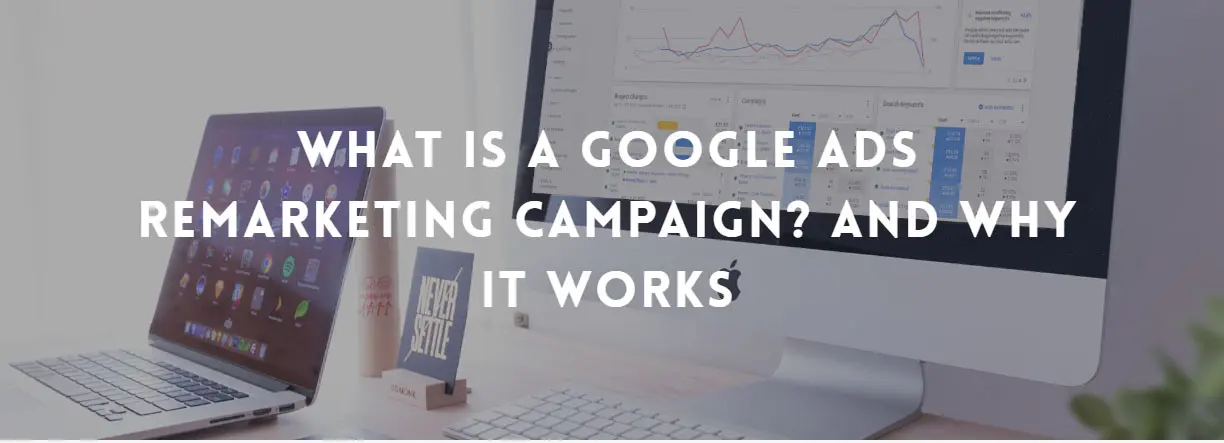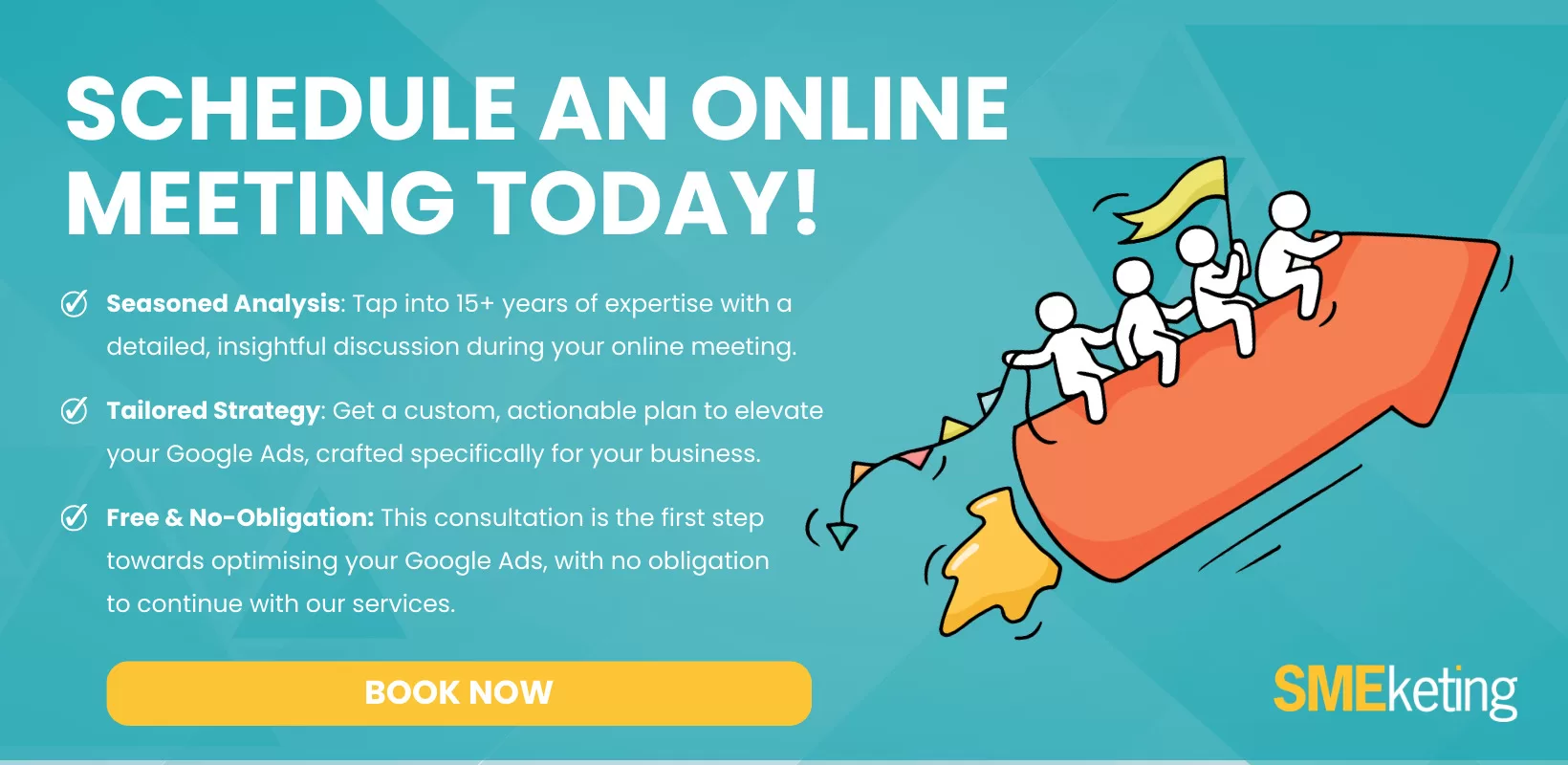Launching a Google Ads remarketing campaign is all about tending to the seeds you’ve already planted. Considering 98% of site visitors do not buy your products or services on their first visit, if you’re not remarketing you’re neglecting a large pool of potential consumers who already know about your product!
Here’s remarketing in a nutshell: after a person visits your site but leaves without completing the desired action (e.g., purchase or signup), you use Google Ads to target that person with advertising. If you’ve ever seen an ad for something you were looking at earlier, you’ve experienced a Google remarketing campaign.
Want to know more about what a remarketing campaign is? Read this article below:
Such campaigns are highly effective – focusing your resources on an already interested group of visitors. Yet, too often, remarketing campaigns see a low conversion rate. That’s because they’re not set up correctly, wasting you your time and money.
Below are some ideas you can test and might be why your remarketing campaign is failing:
1. Your audience is too small
Under Google Ads, remarketing campaigns can launch using either Display Ads, Search Ads, YouTube ads, and Gmail ads.
For the Display Network, you need at least 100 active audience members within the prior 30 days to qualify for a Google remarketing campaign; a minimum of 1,000 active members in the prior 30 days is needed for the Search Network.
If you fall below these targets, focus on building brand awareness and increasing business instead.
2. Forgetting to use customer lists
Collecting customer email addresses is critical for a remarketing campaign. While Google remarketing campaigns rely on Google Ads, you can also use classic email marketing campaigns.
For example, sending newsletters, new product information, or special offers can help bring back prior customers and site visitors. And, because they’re already familiar with your product or service, you can skip further down the conversion funnel.
3. Not using “Similar Audiences”
When you create a Google remarketing campaign, Google automatically creates a “Similar Audience” for you to test. These individuals have a similar search behaviour to your existing remarketing list members. That means they’re more likely to visit your site or purchase your product than randomly chosen individuals.
This option allows you to remarket to prior visitors and attract new customers based on specific search behaviour. It’s the best of both worlds.
4. Neglecting shopping cart abandoners
Why do customers put items into a shopping cart only to abandon it? Maybe the fire alarm went off, or they remembered they were late for a meeting. Whatever the reason, these visitors are among the most valuable targets of a remarketing campaign.
According to HubSpot, customers abandon their digital cart due to price shock, unexpected external factors, or to do further product research.
By sending an email about the cart, or an offer for a specific item, you can prompt that customer to return and purchase the products.
6. Ignoring repeat shoppers
In marketing, it’s common sense that old customers are worth more than new customers. After all, they’re already interested in your product – there’s no need to start from scratch. In fact, a repeat customer spends 67% more than a new customer.
That’s why your remarketing campaign should never forget about repeat shoppers. Whether you’re sending them a birthday gift card or a notification about your latest product launch, re-sparking their interest can lead to a series of purchases.
7. Adding too many exclusions
The more consumers you include in your remarketing campaign, the more it costs. However, whenever you exclude a certain group of customers, you slice your audience up. Slice too many times, and you’ll run out of customers; your ads won’t show to anyone.
Exclusions are a tool to get your ads in front of the right audience. They help refine your audience, increasing your overall ROI. But never go too narrow – balance these audience segments with the need to be seen.
8. Your ad is snooze-worthy
Remarketing is something of a hack to lure back interested visitors. But it’s not a guaranteed sale. Make your ad too wordy, meandering, and boring, and you’re unlikely to see significant traction.
For example, using creatives that are dark, hard to read, or don’t explain what’s going on is a sure-fire way to waste a potential opportunity. Instead, use bold colours for the call-to-action, keep your wording short and snappy, and include a great shot of your product or service.
9. Not using A/B variants to test
Deciding which offer or wording to use for a Google Ad is tricky. While you can make an educated guess, you can’t peer inside your audience’s mind.
Or… can you?
Using A/B variants allows you to test different versions of the same ad; you can tweak the landing page, pictures, font, colours, wording, offer, and more. Then, Google will run these different versions to learn which has the best conversion rate – meaning you can make the most of your remarketing campaign.
10. Not optimising your landing page
When a customer clicks on your ad, the landing page should never be your homepage. Remember: in a remarketing campaign, your audience is already familiar with your products. It’s about luring them back, not raising awareness.
Your landing page, therefore, should mirror your ad. If you’re advertising a pair of running shoes, link to the product page. By reducing the number of clicks, you increase your conversion rate: it should be easy for a customer to make a purchase.
Let me know any other tips you recommend – how did your Google remarketing campaign go?
- How to Do Keyword Research for Google Ads - January 15, 2024
- A Comprehensive Guide to Google Ads for B2C Businesses - January 8, 2024
- How to Write Calls to Action (CTAs) for Google Ads - December 25, 2023








